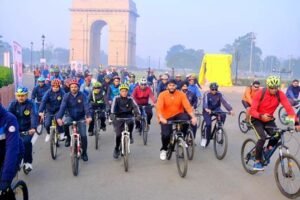New studies on quantum non-locality have expanded the scope of its use
jatinnews.com August 20, 2024 0Scientists have pointed out that a universal standard for measuring and measuring non-local quantum correlations is not possible. Quantum non-locality describes a peculiar connection between distant physical objects, which does not allow for faster communication than light. This new research broadens the potential application of quantum non-local correlations, which are already used in secure communication, random number generation, and cryptographic key creation. Quantum nonlocality has received significant attention since its inception because of its universal appeal in the natural sciences, which continues to influence recent advances in device-independent technology. The story began in 1964 when Northern Ireland physicist John Stuart Bell presented a theorem that changed our view of the quantum world. Bell points out that there is the notion of ‘local realism’ (objects have specific properties independent of observation and are influenced only by their immediate environment)
The story began in 1964 when Northern Ireland physicist John Stuart Bell presented a theorem that changed our view of the quantum world.
Affects recent advances in device-independent technology. The story began in 1964 when Northern Ireland physicist John Stuart Bell presented a theorem that changed our view of the quantum world. Bell points out that ‘local realism’ (objects have certain properties that are independent of observation and are influenced only by their immediate environments- is true in classical physics, but this does not apply at the quantum level.) In multiple, distant quantum systems, correlations are observed that cannot be described through local realism. Bell’s theorem was subsequently confirmed through experiments, which established the nonlocal nature of the quantum world and was recognized with the 2022 Physics Nobel Prize. Quantum nonlocality has since become a key resource for secure communication, random number certification and cryptographic key generation, including how to measure these quantum correlations.
Dr. Manik Banik of the S.N. Bose National Centre for Basic Sciences,
In a recent study published in Physical Review Letters. Dr. Manik Banik of the S.N. Bose National Centre for Basic Sciences, an autonomous institution in the Department of Science and Technology, along with collaborators from the Indian Statistical Institute Kolkata, A BN SEAL College Behar and the University of Hong Kong, has pointed out that a universal criterion for measuring quantum nonlocality is impossible. Their research shows that the nature of nonlocality varies depending on the type of correlation, with infinitely unique points in the correlation boundary. This means there is no single, public resource in the non-local world. Instead, each non-local resource is capable of performing different, specific tasks that others cannot. This discovery has added a new level to our understanding of quantum mechanics, highlighting the complexity and uniqueness of quantum nonlocality as a valuable and diverse resource

